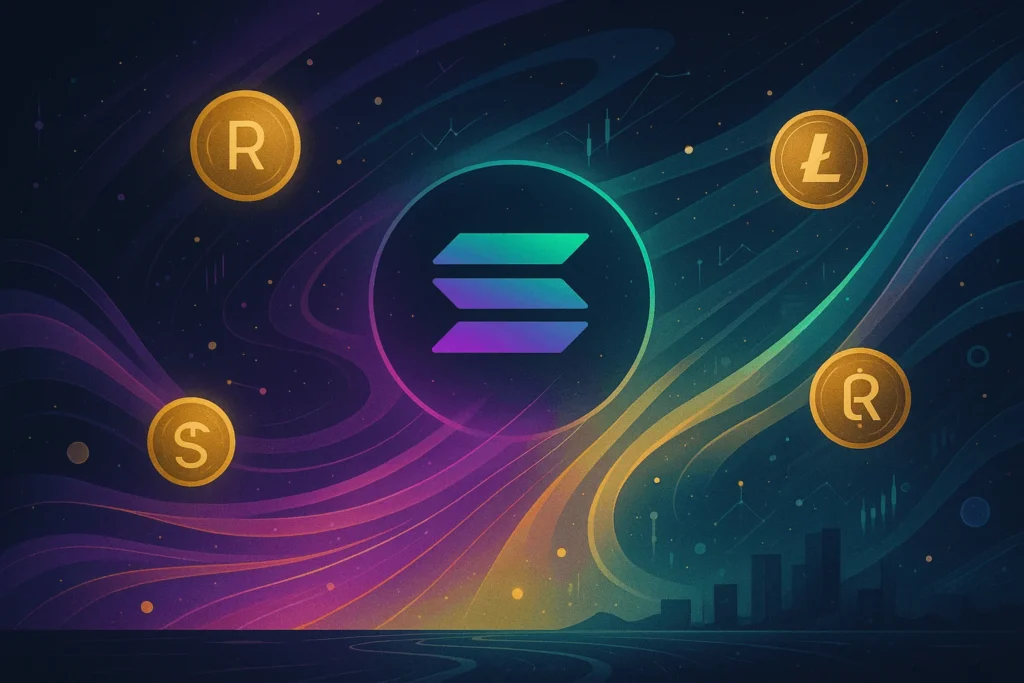September proved to be a whirlwind month for blockchain networks, with major upgrades and launches spanning from Solana’s high-speed finality update to Arbitrum’s multilingual smart contracts, alongside quieter yet critical infrastructure improvements. Let’s break down the key highlights.
Solana — Alpenglow Upgrade
Solana kicked off the month with Alpenglow, a transformative network update rather than a simple patch. Core elements like Proof of History and Tower BFT are gradually being replaced with Votor and Rotor, promising transaction finality in just 150 milliseconds.
For high-frequency traders, this rivals centralized exchanges. Gaming projects may see smoother on-chain interactions. Yet one question remains: do everyday users really need such speed? Regardless, Alpenglow represents one of the boldest architectural overhauls of the year, making Solana hard to ignore.
Arbitrum — Stylus Launch
Arbitrum rolled out Stylus on its mainnet, allowing developers familiar with Rust, C, and C++ to deploy smart contracts without learning Solidity. This opens Web3 development to a broader pool of Web2 programmers, potentially bridging the gap between traditional software engineering and blockchain applications.
While Solidity remains dominant, lowering entry barriers could position Arbitrum as a hub where Web2 talent meets Web3 innovation.
Starknet — Version 0.14.0
Starknet’s September upgrade focused on stability and efficiency: six-second block times, a redesigned mempool, and a distributed sequencer. While not flashy, these changes reduce wait times for users and improve the developer experience. Starknet continues to prioritize reliability over speed, which may appeal to long-term builders.
Stellar — Protocol 23 (Soroban)
Stellar introduced Protocol 23, enabling parallel transaction processing and optimizing its Soroban smart contracts. Exchanges like Upbit briefly paused trading during the upgrade, signaling its importance. Stellar focuses on payments and reliability, ensuring it remains competitive without chasing every trend.
Hedera — Version 0.65
Hedera’s v0.65 update improved node performance, virtual megamaps, and payment graphs—enhancements welcomed by enterprise users. While unlikely to make headlines, these upgrades reduce friction behind the scenes, making the network more practical for corporate adoption.
0G — Aristotle Mainnet Launch
The 0G project debuted its Aristotle mainnet mid-September, combining AI, modular chains, and instant exchange listing. By segmenting computation, storage, and logic into specialized chains, it targets the emerging intersection of AI and blockchain. While some may see hype, Aristotle addresses real demand for decentralized computation and storage.
Plasma — Mainnet Beta
The Plasma beta launched on September 25, coinciding with Korea Blockchain Week. Plasma is a minimalist L1 chain focused solely on stablecoin payments, optimizing microtransactions and reducing friction in digital payments.
Boundless — ZK Computation Marketplace
Finally, Boundless emerged as a zero-knowledge computation marketplace on Base. Projects can outsource heavy computations while receiving verifiable proofs of correctness, integrating with platforms like Wormhole and Lido. This infrastructure could become foundational for decentralized computation in the near future.
Key Takeaways
September highlighted a mix of high-profile upgrades, silent infrastructure improvements, and experimental launches. The blockchain ecosystem is no longer moving in a single direction; instead, multiple parallel experiments are shaping the future. While not all will succeed, the diversity of approaches signals continued growth and innovation.
